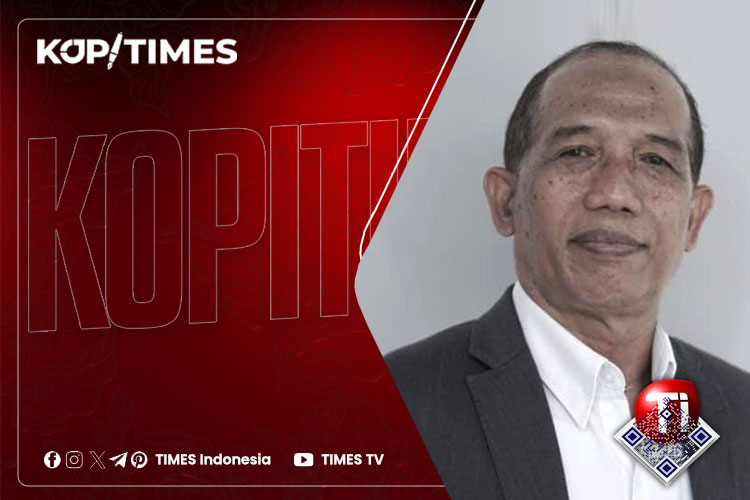ASEAN's Digital Renaissance: Enhancing Connectivity of the Socio-Cultural Community

TIMESINDONESIA, JAKARTA – In the ever-evolving mosaic of ASEAN's socio-cultural community, the dawn of a digital renaissance shines as a beacon of transformative connectivity. Just as the intricate designs of a traditional batik tell a story, this digital transformation interlaces the rich cultural heritage of ASEAN with the cutting-edge technologies of the future. By enhancing digital connectivity, ASEAN aims to preserve its diverse traditions while fostering innovation and inclusivity. To paint an interconnected and resilient cultural landscape, the digital renaissance can offer a new canvas for1) Virtual Reality (VR) and Augmented Reality (AR); 2) block chain; and 3) Artificial Intelligence (AI).
The first canvas is the integration of Virtual Reality (VR) and Augmented Reality (AR) into cultural diplomacy. It can present a groundbreaking opportunity for ASEAN to enhance its socio-cultural connectivity. These immersive technologies can transcend geographical barriers, allowing users from around the world to experience ASEAN's rich cultural heritage. VR and AR can be used to create virtual tours of heritage sites, cultural festivals, and historical reenactments, making them accessible to a global audience without the need for physical travel. This can significantly boost cultural diplomacy by fostering a deeper understanding and appreciation of ASEAN’s diverse cultures among international audiences, thus strengthening global cultural ties and promoting tourism.
Advertisement
Several initiatives demonstrate the potential of VR and AR in cultural diplomacy. For instance, the ASEAN Cultural Heritage Digital Archive could expand to include VR experiences of significant cultural landmarks and events, such as the Angkor Wat in Cambodia, the Borobudur Temple in Indonesia, and the Thaipusam festival in Malaysia. Another example is the collaboration between ASEAN countries to develop a VR platform that hosts virtual cultural festivals, allowing users to participate in traditional dances, music performances, and artisan workshops from the comfort of their homes. Similarly, AR applications can be developed to enhance museum visits, where users can point their devices at exhibits to see historical contexts and 3D reconstructions, providing a richer educational experience.
The impact of incorporating VR and AR into cultural diplomacy is multifaceted. Firstly, it democratizes access to cultural experiences, enabling people who cannot travel to engage with and appreciate ASEAN’s cultural heritage. This can lead to increased cultural tourism once travel is feasible again, as virtual experiences can pique interest and draw tourists to physical sites. Secondly, it fosters greater cultural empathy and understanding by providing immersive experiences that are more impactful than traditional media. Finally, by positioning ASEAN as a leader in using cutting-edge technologies for cultural preservation and promotion, these initiatives can enhance the region’s global cultural influence and soft power, strengthening international relationships and cooperation.
Next, leveraging block chain technology to create a transparent and tamper-proof record of cultural artifacts' provenance presents a significant opportunity to protect cultural heritage from theft and illicit trade. Each artifact can be assigned a digital certificate that meticulously details its history, ownership, and authenticity. This immutable record ensures that every transaction and transfer of ownership is permanently logged and easily traceable, which is crucial in maintaining the artifact's integrity.
The impact of utilizing block chain in this manner extends beyond mere protection. It promotes trust and transparency in cultural exchanges and transactions by providing verifiable proof of an artifact's legitimacy. Furthermore, block chain can facilitate the repatriation of cultural artifacts to their countries of origin, thereby reinforcing cultural identity and pride. By ensuring that cultural artifacts are rightfully owned and accurately documented, block chain technology can significantly enhance the preservation and appreciation of cultural heritage on a global scale.
Engaging the public in cultural preservation through crowdsourced digital projects can also offer a unique opportunity to involve citizens in documenting and digitizing local traditions, languages, and folklore using digital tools and platforms. This approach allows for a broad and inclusive participation where individuals contribute their knowledge and resources to create a comprehensive digital archive of cultural heritage. By leveraging the collective efforts of the community, these projects can capture a wide array of cultural nuances and details that might otherwise be overlooked.
The impact of crowdsourced cultural preservation is profound as it democratizes the process, making it a community-driven effort rather than an exclusive domain of experts and institutions. This inclusive approach ensures a richer, more diverse cultural record that reflects the true breadth of local heritage. Additionally, it fosters a sense of ownership and pride among the local population, as they play an active role in preserving their cultural legacy. This community engagement not only enhances the preservation of cultural heritage but also strengthens social cohesion and cultural identity.
Lastly, one of the most exciting opportunities for enhancing ASEAN's socio-cultural connectivity lies in AI-powered multilingual education platforms. Imagine a world where students in Thailand can seamlessly learn Indonesian through interactive AI tutors, or Singaporean artists can collaborate with Vietnamese filmmakers using real-time translation tools. AI can break down language barriers, fostering intercultural understanding and collaboration on an unprecedented scale.
These platforms wouldn't be static repositories of information. AI can personalize learning experiences, tailoring content and delivery to individual needs. Vietnamese students struggling with Thai pronunciation could receive targeted AI coaching, while aspiring playwrights in different countries could co-write scripts using AI translation that adapts to each language's nuances.
The impact of AI-powered multilingual education would be far-reaching. It would democratize access to knowledge and cultural exchange, empowering individuals and communities previously limited by language barriers. This could lead to a surge in collaborative artistic projects, educational exchanges, and even joint business ventures. By fostering a more linguistically inclusive ASEAN, these platforms can strengthen regional identity and create a vibrant tapestry of interconnected cultures.
In conclusion, ASEAN's digital renaissance paints a vibrant picture of a future where intricate cultural traditions seamlessly blend with cutting-edge technologies. This transformation offers a unique opportunity to not only preserve the region's rich heritage but also foster innovation, inclusivity, and a deeper sense of regional identity. By leveraging VR/AR, block chain, and AI, ASEAN can create a digital tapestry of interconnected cultures, accessible to all.
The impact of this digital renaissance will be multifaceted. It will democratize access to cultural experiences, foster intercultural understanding, and empower local communities to actively participate in preserving their heritage. Additionally, ASEAN will position itself as a leader in cultural diplomacy, wielding increased global influence and fostering stronger international relationships. This digital awakening promises to weave a brighter future for ASEAN's socio-cultural landscape, one where tradition and innovation dance hand-in-hand.
However, this digital transformation is not without its challenges. Ensuring equitable access to technology, addressing potential privacy concerns, and navigating the ever-evolving digital landscape will be crucial. Nevertheless, by embracing the opportunities presented by this digital renaissance, ASEAN can set a groundbreaking example for regional integration and cultural collaboration in the digital age. The future of ASEAN's socio-cultural community shines brightly, a testament to the transformative power of technology when intertwined with the enduring legacy of tradition.
Welcome to ASEAN’s Digital Renaissance: a canvas where ancient wisdom meets binary code, and where every click resonates with the echoes of a thousand gongs. (*)
**) Ikuti berita terbaru TIMES Indonesia di Google News klik link ini dan jangan lupa di follow.
| Editor | : Deasy Mayasari |
| Publisher | : Rochmat Shobirin |

